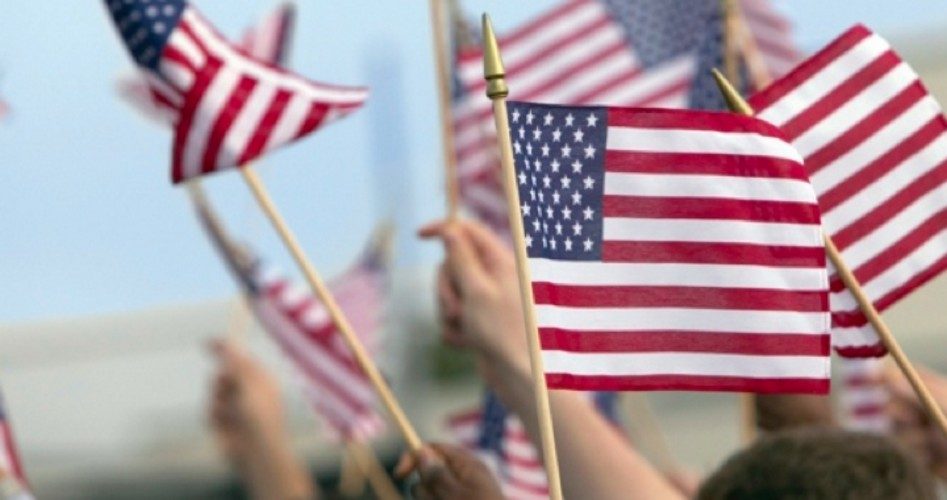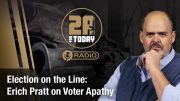
The five American students were not allowed to display their American-flag T-shirts because Mexican students might be offended and become violent. This certainly might be expected in Chihuahua, or Veracruz, or Tijuana. But it happened in Morgan Hill — California — in the USA.
The American schoolboys were given a choice: turn their shirts inside-out, get suspended, or go home. And you probably thought that anywhere in America was our flag’s home.
That was May 5, 2010, “Cinco de Mayo,” at Live Oak High School, and the students have since sued. And now their case may be heard by the Supreme Court. This is because a lower court issued a late January ruling on the incident that critics say establishes a “heckler’s veto” allowing speech to be prohibited simply because someone else is offended by it. Wrote WND.com’s Bob Unruh Jan. 31:
It was a 9th U.S. Circuit Court of Appeals ruling … that affirmed school officials can censor the passive speech of students — such as a message on a T-shirt — if someone else threatens violence because of it.
“American students shouldn’t be censored just because government officials think someone might be offended,” said Senior Legal Counsel Jeremy Tedesco of the Alliance Defending Freedom, one of the legal teams filing friend-of-the-court briefs in support of overturning the ruling.
And with the Supreme Court considering hearing the case, Unruh updated the story Monday. He quoted Thomas More Law Center attorney Erin Mersino as saying that the 9th Circuit ruling “would be a terrible precedent.” She also expressed the sentiment, wrote Unruh, that the decision “was a stunning repudiation of the U.S. Supreme Court’s ruling in the Tinker case, which ruled students do not lose their constitutional rights at the schoolhouse door.” He also pointed out that the January ruling was not unanimous, writing:
Judge Diarmuid O’Scannlain warned in his dissent from the 9th Circuit that the decision would result in “mob rule.”
He said: “The next case might be a student wearing a shirt bearing the image of Che Guevara, or Martin Luther King Jr. or Pope Francis. It might be a student wearing a President Obama ‘Hope’ shirt, or a shirt exclaiming ‘Stand with Rand!’ It might be a shirt proclaiming the shahada, or a shirt accounting “Christ is risen!’ It might be any viewpoint imaginable, but whatever it is, it will be vulnerable to the rule of the mob.
“The demands of bullies will become school policy,” he said.
Interestingly, though, this may be a case in which both sides have it very wrong and neither side sees the profound danger in the path we’re taking.
There’s certainly much to take issue with in this case. The problems began that May 5, 2010 day when the “five boys were confronted during their lunch break by Assistant Principal Miguel Rodriguez while they wore American flag bandannas and T-shirts,” wrote WND.com’s Chelsea Schilling at the time. They were then told they couldn’t sport the American flag because it was a “holiday” for “Mexican-Americans” and they had to be sensitive. This was despite the fact that “more than 100 students were seen wearing red, white and green as they left school. Some even [had] their faces and arms painted with the colors of the Mexican flag,” wrote Schilling.
Some might say that violence could have “erupted” (as if it’s a volcano, a thing without purpose, responsibility, and will) had the school not dealt with the small patriotic minority, and the good of the many outweighs the good of the few. But is this principle applied consistently?
If a boy claims to be a girl and arrives at school thus dressed and other students taunt him and threaten violence, it becomes a federal case; the aggressors are given no quarter and “tolerance” is “enforced.” In fact, there’ve been incidents in which schools have engaged in “sensitivity training” and allowed such “transgender” pupils to use the opposite sex’s bathrooms — thus turning the school upside-down — in deference to one solitary student’s anomalous feelings. Yet when pupils want to express what should be a mainstream feeling, patriotism, they aren’t tolerated at all.
And the excuse that it was a “Mexican-American day,” Cinco de Mayo, is an interesting one. The St. Patrick’s Day Parade in NYC is known as a celebration of Irish heritage, yet American flags are numerous, prominently displayed, and are welcomed — and no one takes offense. The message is clear: I may be of Irish background, but I’m 100 percent American. Contrast this with the attitude many displayed at Live Oak High. As Schilling reported, “Some Hispanic students told NBC they were offended at the boys’ behavior. ‘I think they should apologize ’cause it is a Mexican heritage day,’ Live Oak High student Annicia Nunez said. ‘We don’t deserve to be disrespected like that.’”
Why the difference? And who is showing whom disrespect?
Yet while there’s good reason to lament the school’s anti-American — and some would say treasonous — spirit, there’s also cause to take issue with the courts’ rulings. This doesn’t mean what you think.
The reality is that minors do not have free-speech rights within schools.
After all, a student can be punished if he curses out a teacher or other pupils, insists on speaking out of turn, or spouts disruptive rhetoric. How many of us, for instance, would want students to be allowed to continually espouse genocidal ideas or Islamic jihad? And while courts have ruled (many would say incorrectly) that symbolism is protected under the First Amendment, students may not sport certain vulgar images that would be allowed on the street.
The courts have acknowledged the above, by the way, which is why they set limits on student speech — just as parents and teachers would. The difference is that the courts want to pretend it’s a First Amendment issue so that they can seize this power from the people — who could otherwise influence this matter via elected school boards — and become the arbiters of what student speech is allowable and have a hand in molding the young.
It isn’t just speech, either, as there’s a host of adult rights and privileges not afforded to minors. They may not vote, buy cigarettes or alcohol, drive cars, join the military, or enter into contracts, just to name a handful.
We also might wonder about where ascribing free-speech rights to minors might lead. Connect the dots: First you grant minors adult rights in school. Then, because doing so is thoroughly unrealistic, you curtail those adult rights. Now you have the precedent of the state curtailing adult rights. And then, perhaps, it’s just a couple of leaps between limiting the “adult rights” of minors inside of schools and limiting the adult rights of adults outside of them — with the courts as arbiters of how those adult rights may be abridged.
Note that there’s already incentive for this, as certain leftist forces want the United States to adopt European-style “hate speech” laws.
Still think conflating adults’ and children’s roles and rights is a good idea?
Of course, some would point out that we could perhaps avoid these problems by simply separating school and state. But how much chance is there of that happening in a country that’s afraid to even fly its own flag?



